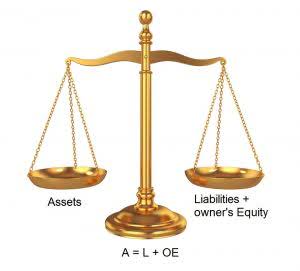
In these programs, you can learn accounting principles, accounting software, payroll, how to prepare financial statements, and more. You typically maintain accurate accounting records across all transactions while communicating with others. A bookkeeper’s job comprises maintaining and balancing financial records, including transactions from coworkers.

How to start a bookkeeping business in 8 steps
As mentioned above, a lot of the data entry now happens automatically, either through OCR or bank feeds. Some bookkeepers focus solely on “write up” work, which basically consists of compiling the books quickly, usually for tax preparation purposes. Other bookkeepers provide “full-charge” services and can even serve as a financial controller for your company.

Why bookkeeping matters
- If you’re adding new accounts to your bookkeeping, it’s important to ensure they’re properly set up.
- Right now, you can save up to $30 on the first month of FuboTV’s streaming tiers and stream everything from Major League Baseball to Premier League soccer.
- Reconciling accounts ensures accuracy and integrity in the financial reporting process.
- Not only do you have to account for the principal, but also the accumulating interest.
- Every transaction you make needs to be categorized and entered into your books.
Becoming an accountant usually requires more training and education than bookkeeping and can be a good next step in your financial career. Catching up on your accounting records not only provides an accurate picture of your financial health but also serves as a foundation for your business plan. When migrating to a new software system, preparing for tax season, https://www.bookstime.com/ or encountering poor cash flow, it may be time to catch up on your bookkeeping. Look for a bookkeeping service with experience in catch-up bookkeeping and a deep understanding of small business bookkeeping services in the USA. Experienced bookkeepers are more likely to efficiently handle the catch-up process and provide accurate financial records.
Types of bookkeeping
Timely bookkeeping allows business owners and managers to make informed decisions based on current financial data. For example, catching up on a few months of bank statements and business expenses may only cost a few hundred dollars. However, catching up on a year’s worth of financial records and reconciling discrepancies could cost thousands of dollars in bookkeeping services. This feature allows users to spot trends over time, enabling them to make informed decisions about their business. By using accounting software, business owners can optimize their bookkeeping process and gain an accurate picture of their company’s financial health. As a business owner, it is important to maintain accurate financial records to ensure tax compliance, avoid potential government penalties, and make informed financial decisions.
- This can be done manually using spreadsheets or accounting software.
- The site is letting new members try its collection of channels for free during a one-week trial.
- As we prepare for tax season 2024, consider DANP Global Bookkeeping & Accounting Outsourcing USA.
- Doing so will save you time and effort and ensure that your books are in good hands.
- Catch up bookkeeping helps to detect and correct such errors before they turn into serious issues.
- Just because you do most of your work from your dining room table doesn’t mean that you can deduct your entire monthly rent.
- You’ll be connected to a CPA or EA who will do your monthly bookkeeping through our platform.
- By outsourcing catch up bookkeeping, businesses can focus on core activities while professionals handle intricate financial details, reducing the risk of penalties and legal issues.
- Any inconsistency can turn into a red flag, making them wonder what else is wrong with your business.
- Consider starting your search into business entities for bookkeepers by looking into sole proprietors and LLCs.
Staying up-to-date throughout the year can even help you to plan ahead so that you can reduce the stress that often comes with tax season. This is What Is Catch Up Bookkeeping another common scenario where catch-up bookkeeping comes into play. If you last looked at your books a while ago, likely, they’re not up-to-date.
Step 6: Choose a system for storing your documents
This ensures your transactions are correct and allows you to catch any mistakes that may have been made in previous steps. Catch-up bookkeeping puts you in control of your finances, makes it much easier to prepare quarterly estimated taxes and year-end returns, and optimizes your small business cash flow. Catch up bookkeeping enables businesses to access reliable financial data, empowering decision-makers to identify trends, assess performance, and implement strategic initiatives more confidently. Between ensuring growth and managing employees, it’s easy for things to get lost in the shuffle.
- Typically, double-entry bookkeeping uses accrual accounting for liabilities, equities, assets, expenses and revenue.
- Catch-up bookkeeping is the process of updating and bringing current all of your financial records that have fallen behind.
- Your bookkeeper might also prepare other auxiliary reports for your business, like accounts payable and accounts receivable aging reports.
- By reconciling your bank accounts beforehand, you’ll have accurate financial records when it’s time to file.
- Just make sure you have a plan to pay off the balance before the introductory offer ends and a variable APR sets in.
Outsourcing to a professional

During this assessment, the bookkeeper will gather all available financial documents, such as bank statements, receipts, invoices, and previous financial reports. One of the main reasons businesses fall behind on their bookkeeping is the lack of time. Small business owners often wear multiple hats and may prioritize other aspects of their business over maintaining financial records.


Falling behind on your books is no fun, so you’ll want to avoid it in the future. Do this by setting aside time to update your books at least once a week. A little bookkeeping each week can save you from a lot of pain later on. Catch-up bookkeeping is sometimes referred to as bookkeeping clean-up, bookkeeping catch-up, clean-up bookkeeping, and catch-up accounting.
How to become a bookkeeper
For small businesses, accurate and timely bookkeeping can be the difference between success and failure. However, it is not uncommon for small business owners to fall behind on their bookkeeping tasks due to various reasons such as lack of time, expertise, or resources. Catch-up bookkeeping is the process of updating and bringing current all of your financial records that have fallen behind.